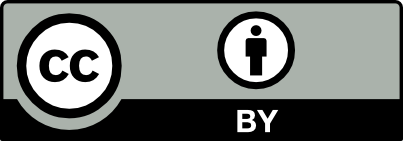In this paper, we propose to revisit a reciprocity gap method for solving point inverse source problem in an advection diffusion equation. The motivation of this problem is in ecology for pollutant source identification in a river. We propose the construction of original (numerically computed) adjoint functions that allows to consider more realistic geometries and river flows. The method is combined with a state estimator which allows to accelerate the identification process. The proposed method is validated on several examples.
Keywords: Inverse source problem, advection diffusion equation, reciprocity gap method.
Antoine Tonnoir 1
 CC-BY 4.0
CC-BY 4.0
@article{SMAI-JCM_2025__11__233_0,
author = {Antoine Tonnoir},
title = {Combining reciprocity gap method and state estimator for source identification in an advection diffusion equation},
journal = {The SMAI Journal of computational mathematics},
pages = {233--260},
publisher = {Soci\'et\'e de Math\'ematiques Appliqu\'ees et Industrielles},
volume = {11},
year = {2025},
doi = {10.5802/smai-jcm.124},
language = {en},
url = {https://smai-jcm.centre-mersenne.org/articles/10.5802/smai-jcm.124/}
}
TY - JOUR AU - Antoine Tonnoir TI - Combining reciprocity gap method and state estimator for source identification in an advection diffusion equation JO - The SMAI Journal of computational mathematics PY - 2025 SP - 233 EP - 260 VL - 11 PB - Société de Mathématiques Appliquées et Industrielles UR - https://smai-jcm.centre-mersenne.org/articles/10.5802/smai-jcm.124/ DO - 10.5802/smai-jcm.124 LA - en ID - SMAI-JCM_2025__11__233_0 ER -
%0 Journal Article %A Antoine Tonnoir %T Combining reciprocity gap method and state estimator for source identification in an advection diffusion equation %J The SMAI Journal of computational mathematics %D 2025 %P 233-260 %V 11 %I Société de Mathématiques Appliquées et Industrielles %U https://smai-jcm.centre-mersenne.org/articles/10.5802/smai-jcm.124/ %R 10.5802/smai-jcm.124 %G en %F SMAI-JCM_2025__11__233_0
Antoine Tonnoir. Combining reciprocity gap method and state estimator for source identification in an advection diffusion equation. The SMAI Journal of computational mathematics, Volume 11 (2025), pp. 233-260. doi : 10.5802/smai-jcm.124. https://smai-jcm.centre-mersenne.org/articles/10.5802/smai-jcm.124/
[1] Solving inverse source problems using observability. Applications to the Euler–Bernoulli plate equation, SIAM J. Control Optim., Volume 48 (2009) no. 3, pp. 1632-1659 | DOI | MR | Zbl
[2] Identification of moving pointwise sources in an advection–dispersion–reaction equation, Inverse Probl., Volume 27 (2011) no. 2, 025007, 21 pages | MR | Zbl
[3] On an inverse source problem for the heat equation. Application to a pollution detection problem, II, Inverse Probl. Sci. Eng., Volume 23 (2015) no. 3, pp. 389-412 | DOI | MR | Zbl
[4] Kernel representation of Kalman observer and associated H-matrix based discretization, ESAIM, Control Optim. Calc. Var., Volume 28 (2022), 78, 41 pages | MR | Zbl
[5] Introduction to modeling of transport phenomena in porous media, Theory and Applications of Transport in Porous Media, 4, Springer, 2012
[6] Modeling groundwater flow and contaminant transport, Theory and Applications of Transport in Porous Media, 23, Springer, 2010, xxi+834 pages | DOI
[7] Uniqueness for an ill-posed reaction-dispersion model. Application to organic pollution in stream-waters, Inverse Probl. Imaging, Volume 6 (2012) no. 2, pp. 163-181 | DOI | MR | Zbl
[8] Solving inverse source wave problemfrom Carleman estimates to observer design (2024) (hal-04788439, version 1)
[9] Mathematical analysis of an observer for solving inverse source wave problem (2023) (hal-04344193, version 1)
[10] An efficient two-level overlapping domain decomposition method for recovering unsteady sources of 3D parabolic problems, Comput. Math. Appl., Volume 111 (2022), pp. 98-108 | DOI | MR | Zbl
[11] Numerical modeling of advection and diffusion of urban area source pollutants, J. Appl. Meteorol. Climatol., Volume 11 (1972) no. 2, pp. 312-322 | DOI
[12] On an inverse source problem for the heat equation. Application to a pollution detection problem, J. Inverse Ill-Posed Probl., Volume 10 (2002) no. 6, pp. 585-599 | DOI | MR | Zbl
[13] Identification of a point source in a linear advection–dispersion–reaction equation: application to a pollution source problem, Inverse Probl., Volume 21 (2005) no. 3, pp. 1121-1136 | MR | Zbl
[14] Inverse source problem in an advection–dispersion–reaction system: application to water pollution, Inverse Probl., Volume 23 (2007) no. 5, pp. 2103-2120 | MR | Zbl
[15] Detection-Identification of multiple unknown time-dependent point sources in a 2 D transport equation: application to accidental pollution, Inverse Probl. Sci. Eng., Volume 25 (2017) no. 10, pp. 1423-1447 | DOI | MR | Zbl
[16] A non-iterative method for identifying multiple unknown time-dependent sources compactly supported occurring in a 2d parabolic equation, Inverse Probl. Sci. Eng., Volume 26 (2018) no. 5, pp. 744-772 | DOI | MR | Zbl
[17] Dispersion–current adjoint functions for monitoring accidental sources in 3D transport equations, Inverse Probl. Sci. Eng., Volume 29 (2021) no. 10, pp. 1445-1476 | DOI | MR | Zbl
[18] Monitoring and modeling pesticide fate in surface waters at the catchment scale, Ecol. Model., Volume 209 (2007) no. 1, pp. 53-64 | DOI
[19] An inverse problem in estimating the strength of contaminant source for groundwater systems, Appl. Math. Modelling, Volume 32 (2008) no. 4, pp. 417-431 | DOI | MR | Zbl
[20] Modeling and simulation of pollutants transport in rivers, Appl. Math. Modelling, Volume 31 (2007) no. 7, pp. 1371-1396 | DOI | Zbl
[21] Boundary output feedback stabilisation for 2-D and 3-D parabolic equations (2023) | arXiv
[22] Problèmes aux limites non homogènes. II, Ann. Inst. Fourier, Volume 11 (1961), pp. 137-178 | DOI | Numdam | MR | Zbl
[23] Boundary stabilization of parabolic equations, Progress in Nonlinear Differential Equations and Their Applications, 93, Birkhäuser, 2019, xii+214 pages | DOI | MR
[24] Multiple source detection and localization in advection-diffusion processes using wireless sensor networks, 2009 30th IEEE Real-Time Systems Symposium, IEEE (2009), pp. 333-342 | DOI
[25] Optimization method for the inverse problem of reconstructing the source term in a parabolic equation, Math. Comput. Simul., Volume 80 (2009) no. 2, pp. 314-326 | DOI | MR | Zbl
[26] On source-term parameter estimation for linear advection-diffusion equations with uncertain coefficients, SIAM J. Sci. Comput., Volume 38 (2016) no. 4, p. A2334-A2356 | DOI | MR | Zbl
Cited by Sources:

